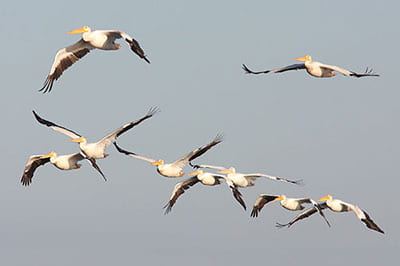Graduate students work to restore Cat Island
 For some, Cat Island is just a lump of land that juts a little above the waters of Green Bay not far from the mouth of the Fox River. But for UW-Green Bay graduate students Tim Flood and Tom Prestby — each is enrolled in the Environmental Science and Policy graduate program — it is a valuable piece of property for graduate research and habitat restoration.
For some, Cat Island is just a lump of land that juts a little above the waters of Green Bay not far from the mouth of the Fox River. But for UW-Green Bay graduate students Tim Flood and Tom Prestby — each is enrolled in the Environmental Science and Policy graduate program — it is a valuable piece of property for graduate research and habitat restoration.
Flood and Prestby were two of the eleven students selected for the 2013-14 Cofrin or Land Trust student research grants. Students apply for the grants to conduct research projects on topics of conservation and management of natural areas throughout Northeast Wisconsin.
The Cat Island project is a natural for UW-Green Bay students to explore. An effort to rebuild a chain of long-lost “barrier islands” that formerly protected the lower bay west of the Fox River toward the mouth of Duck Creek, the construction project was a major undertaking that saw dump trucks carrying rocks and fill along a dike/road through much of 2013. Onlookers from a distance were no doubt surprised to see the vehicles “driving on water,” not aware that until high water three decades ago washed it away, the Cat Island Chain extended above the bay’s surface. (The bay level is down roughly four feet from its recent high.)
Flood, who did his undergraduate work at UW-Parkside, is working on comparing the two sides of the new barrier to see how the island’s improvements might help with reestablishing aquatic plants in the bay. He is comparing wave velocity, light extinction and vegetation growth between the two sides.
Prestby spends four or five days each week during migration months at 13 sites around Green Bay monitoring shore birds to research the locations the shore birds are using most. He said the Cat Island site is, by far, the best site to locate habitat variety. When he began his research, he hoped to identify 25 different species of birds on the Island, but was surprised to find more than 30 species, including some that are listed as endangered.
Habitat loss has long been identified as the greatest threat to the long-term ecosystem of a healthy Green Bay. Restoration of island and aquatic habitats will enhance spawning and nursery for various fish species and restore lost habitats, marshes and aquatic vegetation that helps clean the water.
For Flood and Prestby, the project also provides critical connections with the people and to the resources which can help them in their post-graduate careers.
“I have been connected with a number of professionals throughout the project, not only here at UW-Green Bay, but also collaborating with people from the Wisconsin DNR and nature conservancy,” Flood says.
One of those connections is Patrick Robinson, co-director and environmental studies specialist for the UW Environmental Resources Center and an adjunct faculty in the Environmental Science and Policy graduate program at UW-Green Bay. He serves as Flood’s adviser.
Robinson knows what Flood and Prestby are experiencing. He completed both his undergraduate and graduate programs at UW-Green Bay in the 1990s.
“There are quite a few folks who are interested in what his findings are going to show,” Robinson said. “It’s not only interesting to ecologists, but it has implications to fishery, hunters, bird watchers and people who like to kayak the lower bay area as well. This gives Tim a great opportunity to get out and meet with people and share his results.”
Prestby graduated from the University of Wisconsin-Madison in 2009. When looking for a graduate program, he chose UW-Green Bay for its location and he had special interest in working with Prof. Bob Howe, who is also the director of the Cofrin Center for Biodiversity.
Prestby was impressed with how respected Howe is in the ornithology and ecology field. With Prestby’s area of emphasis ornithology — the study of birds — UWGB and Howe were a perfect match for his graduate work.
“This is helping me prepare for jobs,” Prestby said. “In the science field it is really good experience to be in charge of your own project and doing all of the research for it.
Flood and Prestby will present their research for the grants in March 2014 and will present at the annual Cofrin Center for Biodiversity student research symposium in the spring of 2014.
Click thumbnails to enter slideshow view.












Photos: Birds by Tom Prestby, Tim by Patrick Robinson, and Tom by Bob Howe.
Story by Cheyenne Makinia, editorial intern, Marketing and University Communication


